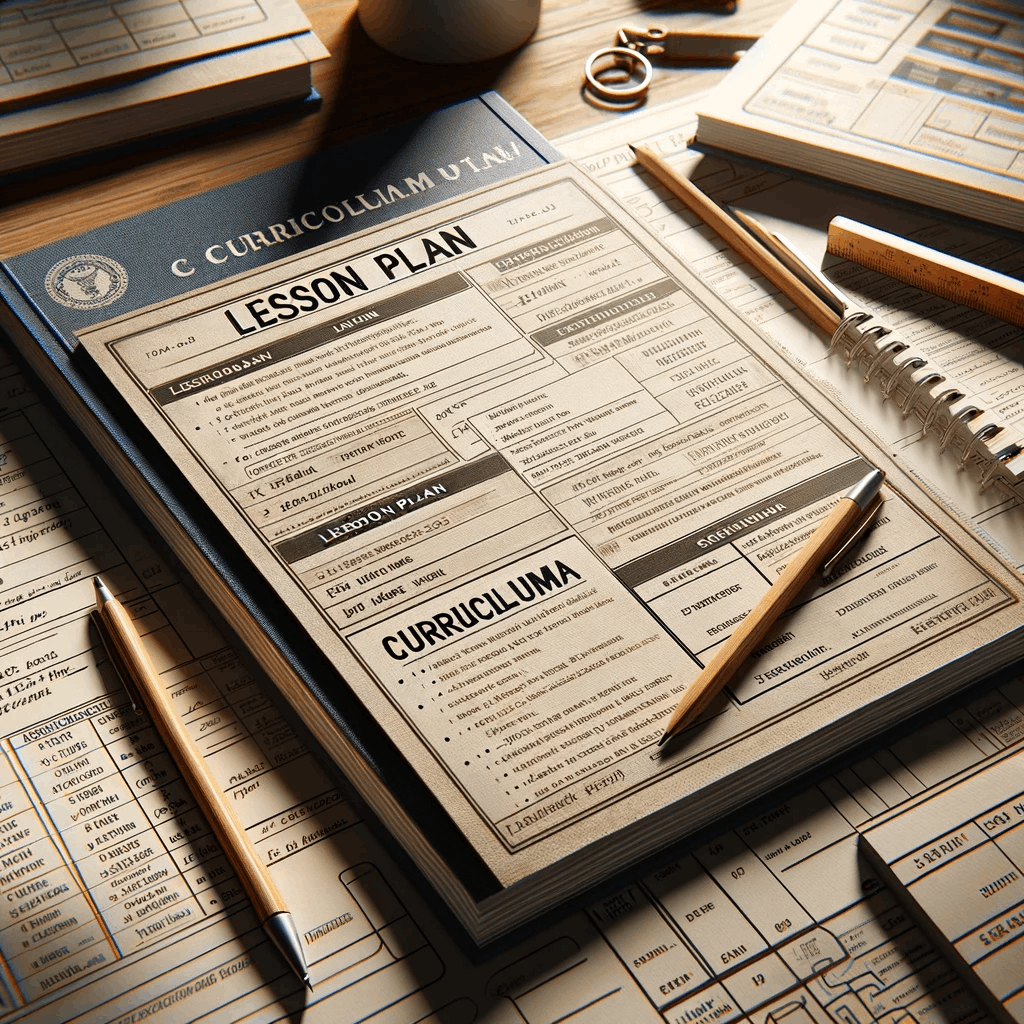Are you ready to embark on a journey into the world of education and make a lasting impact on the future? This teaching career guide will walk you through the essential steps to thrive as a teacher.
Whether you're an aspiring educator or a seasoned pro, this roadmap is your key to a fulfilling and successful teaching career.
Teacher Training and Certification
Professional development and ongoing training are integral to a successful teaching career. Here's the process of obtaining teaching certification:
- Educational Requirements: Begin by completing the necessary educational qualifications, typically a bachelor's degree in education or a related field.
- Teacher Preparation Programs: Enroll in a recognized teacher preparation program, which provides you with the knowledge and skills required for teaching.
- Student Teaching: Gain practical experience through student teaching, where you work in a classroom under the guidance of an experienced mentor.
- State Certification Exams: Prepare for and pass the state certification exams assessing your subject knowledge and teaching abilities.
- Background Check and Fingerprints: Undergo a background check and fingerprinting to ensure you meet the legal requirements for working with students.
- Application Process: Submit your certification application to the relevant state education agency, providing all required documentation and fees.
- Continuing Education: Stay updated with ongoing professional development and training to maintain and renew your teaching certification.
Classroom Management
Effective classroom management is crucial for a productive learning environment. Here are concise tips to help you manage your classroom effectively:
- Establish clear rules: Ensure consistent communication and enforcement.
- Foster relationships: Cultivate a supportive classroom community.
- Maintain consistency: Uphold fairness in discipline.
- Engage students actively: Utilize diverse teaching methods.
- Optimize time management: Maximize learning opportunities.
- Implement rewards: Motivate and reinforce positive behavior.
- Resolve conflicts: Address issues calmly and constructively.
- Practice patience: Keep composure in challenging moments.
- Utilize non-verbal cues: Manage behavior discreetly.
- Pursue professional development: Continually enhance classroom skills while emphasizing the importance of creating a positive and inclusive learning environment.

Lesson Planning and Curriculum Development
Designing effective lesson plans is essential for engaging and educating students. Here's a step-by-step process to help you create impactful lessons:
- Set Clear Objectives: Define the specific learning goals and outcomes you want to achieve with the lesson.
- Assess Student Needs: Understand your students' prior knowledge and individual needs to tailor the lesson accordingly.
- Plan Engaging Activities: Develop activities and materials that actively involve students and align with the learning objectives.
- Sequence Content Logically: Organize the lesson in a logical order that builds on previous knowledge and prepares for future learning.
- Include Assessment Methods: Integrate assessments like quizzes, discussions, or projects to gauge student understanding.
- Differentiate Instruction: Modify your teaching methods to accommodate diverse learning styles and abilities.
- Incorporate Technology: Utilize technology and digital resources where appropriate to enhance the learning experience.
- Provide Clear Instructions: Ensure that students understand the tasks and expectations clearly.
- Allocate Time Wisely: Allocate time for each activity and stick to the schedule to cover all planned content.
- Reflect and Adjust: After the lesson, evaluate its effectiveness and make necessary adjustments for future improvement.
Strategies for Aligning Lessons with Curriculum Standards
Aligning lessons with curriculum standards is vital to ensure that students receive a well-rounded and standardized education. Here are strategies to help you achieve this alignment:
- Review Curriculum Standards: Familiarize yourself thoroughly with the relevant curriculum standards for your subject and grade level.
- Identify Learning Objectives: Break down curriculum standards into specific learning objectives to guide lesson planning.
- Use Curriculum Guides: Refer to curriculum guides or textbooks provided by your educational institution to align your lessons with the established standards.
- Prioritize Essential Content: Focus on the key concepts and skills outlined in the standards, ensuring they are central to your lesson.
- Create Clear Learning Outcomes: Clearly define what students should know and be able to do by the end of the lesson.
- Select Relevant Resources: Choose instructional materials, textbooks, and supplementary resources that align with the curriculum standards.
- Design Assessments: Create assessments and evaluation methods that directly measure student mastery of the standards.
- Plan Scope and Sequence: Organize your lessons in a logical sequence that follows the progression of the curriculum standards.
- Incorporate Interdisciplinary Connections: Explore opportunities to integrate concepts from different subject areas to reinforce learning.
- Stay Informed: Stay updated on any changes or updates to the curriculum standards to ensure ongoing alignment with your lessons.
Effective Teaching Strategies
Effective teaching involves various methods and approaches to cater to diverse learning styles and needs. Here's a list of different teaching methods and approaches:
- Lecture Method: Traditional teacher-led presentation of information.
- Discussion-Based Teaching: Encourages student participation and critical thinking through group discussions.
- Interactive Teaching: Engages students actively through hands-on activities and demonstrations.
- Socratic Method: Encourages critical thinking and discussion by asking open-ended questions.
- Problem-Based Learning: Focuses on solving real-world problems to enhance understanding and problem-solving skills.
- Project-Based Learning: Students work on extended projects to apply knowledge and skills in practical contexts.
- Flipped Classroom: Students review content independently at home and use class time for discussions and activities.
- Collaborative Learning: Students collaborate on assignments and projects to promote teamwork and peer learning.
- Inquiry-Based Teaching: Encourages students to ask questions, investigate, and discover knowledge independently.
- Experiential Learning: Learning through direct experience, such as field trips and hands-on experiments.
Tips on Engaging Students and Promoting Active Learning
Engaging students and fostering active learning are fundamental to effective teaching. Here are some valuable tips for creating dynamic and participatory classrooms:
- Encourage Questions: Create an open environment for asking questions.
- Use Real-World Examples: Relate lessons to practical situations.
- Incorporate Technology: Use digital tools to enhance engagement.
- Include Interactive Activities: Encourage hands-on participation.
- Vary Teaching Methods: Mix lectures, discussions, and demonstrations.
- Connect Prior Knowledge: Build on existing understanding.
- Provide Autonomy: Let students choose their learning path.
- Gamify Learning: Add game elements for engagement.
- Offer Feedback: Give constructive guidance regularly.
- Foster a Positive Environment: Create a respectful, encouraging classroom culture.
Assessment and Evaluation
Assessment plays a crucial role in gauging student progress and guiding effective teaching. Here are various assessment methods and tools to help educators evaluate student learning:
- Quizzes and Tests: Standard assessments to measure knowledge and comprehension.
- Homework Assignments: Assignments and exercises to reinforce learning and assess understanding.
- Classroom Discussions: Evaluate students' ability to engage in meaningful discourse and critical thinking.
- Oral Presentations: Assess communication skills, research abilities, and confidence.
- Written Essays and Papers: Gauge written communication, research, and analytical skills.
- Group Projects: Evaluate teamwork, collaboration, and problem-solving abilities.
- Portfolios: Collect and assess student work overtime to demonstrate growth and achievement.
- Peer Assessment: Have students evaluate and provide feedback on each other's work.
- Observations: Observe student behavior and participation in class activities.
- Self-Assessment: Encourage students to reflect on their learning and set improvement goals.
Professional Networking
Professional networking is valuable for educators, offering opportunities to connect, collaborate, and grow in their field. Here are vital aspects to consider:
- Build Relationships: Connect with colleagues and peers to exchange knowledge.
- Share Resources: Swap educational materials and teaching strategies.
- Continuous Learning: Stay updated through discussions and conferences.
- Collaborative Projects: Partner for research and curriculum development.
- Career Advancement: Open doors to leadership and development.
- Problem Solving: Seek solutions from a diverse network.
- Support System: Gain emotional and professional support.
- Mentoring: Access guidance from experienced educators.
- Professional Organizations: Join teaching associations for resources.
- Online Communities: Engage in educational platforms for global connections.
The Bottomline
In summary, these steps provide a roadmap for aspiring and experienced educators to enter the profession with a strong foundation and continue evolving to make a lasting impact on their students.
Teaching is a dynamic journey, and with dedication and the proper guidance, every step contributes to a successful and fulfilling career in education.



